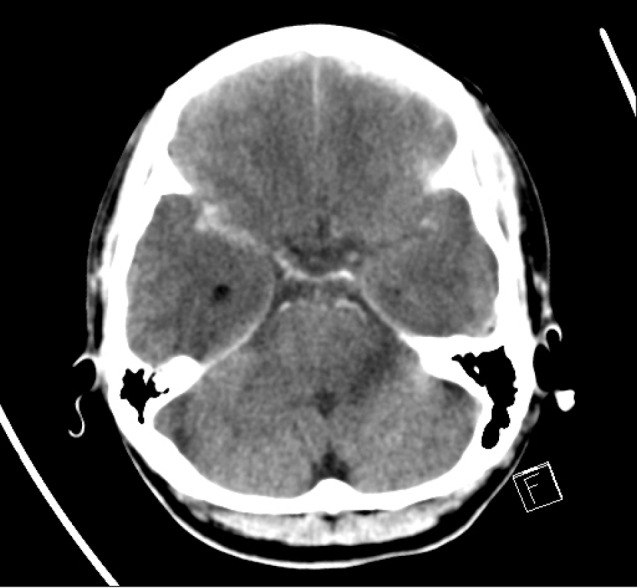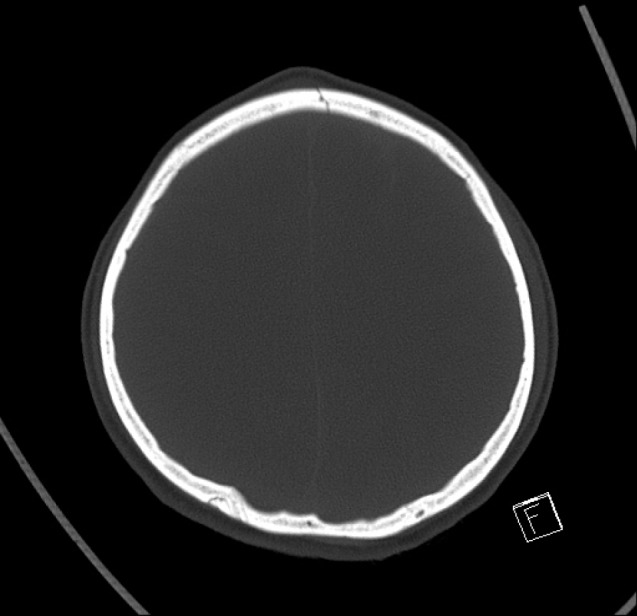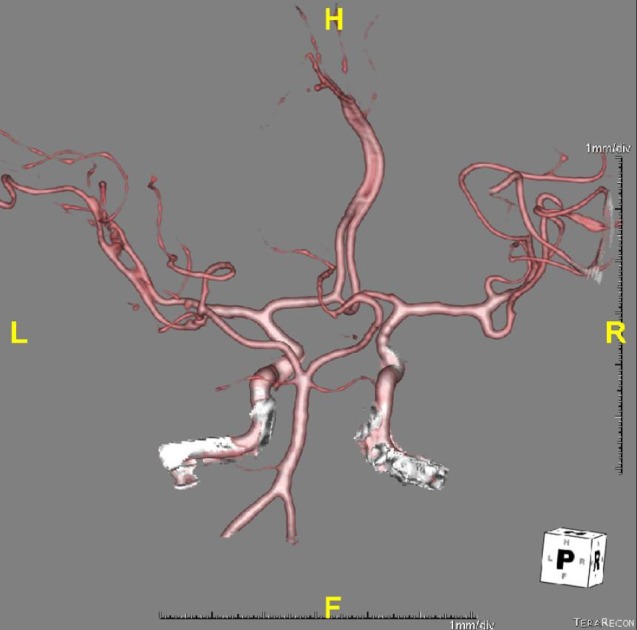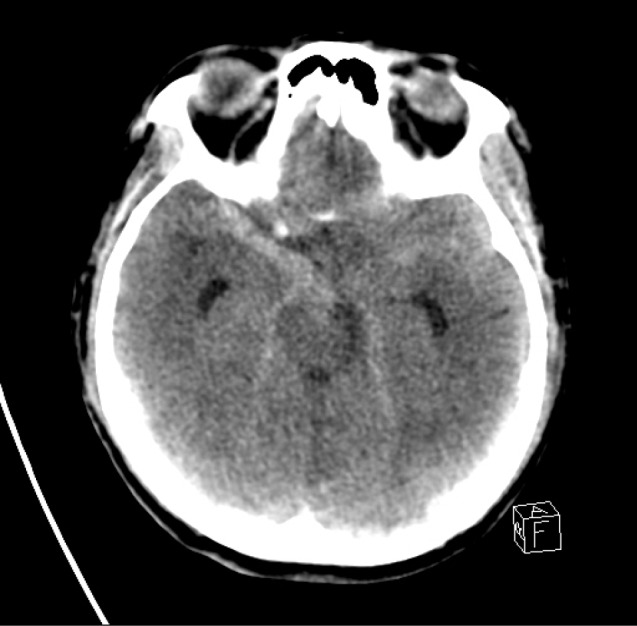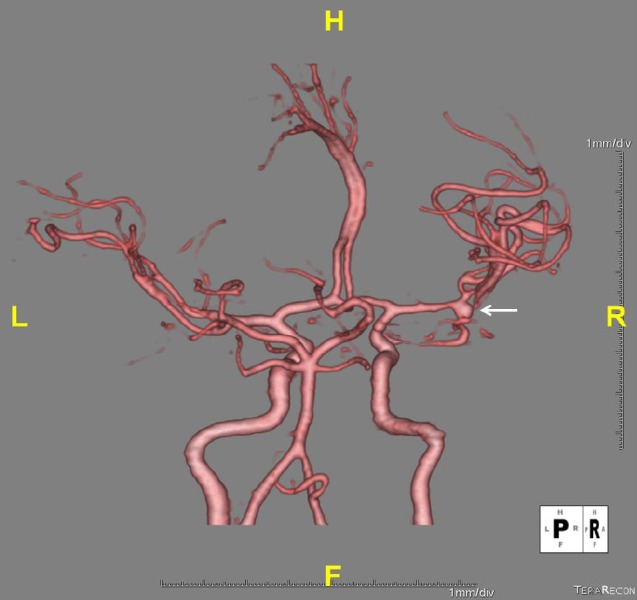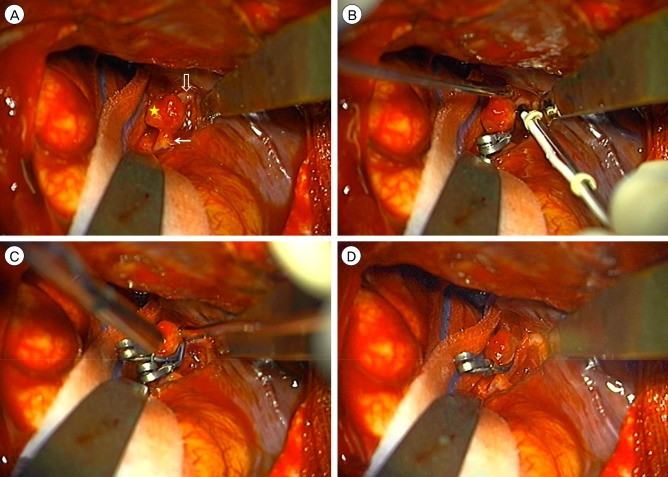J Cerebrovasc Endovasc Neurosurg.
2016 Sep;18(3):253-257. 10.7461/jcen.2016.18.3.253.
Delayed Rebleeding of Cerebral Aneurysm Misdiagnosed as Traumatic Subarachnoid Hemorrhage
- Affiliations
-
- 1Department of Neurosurgery, School of Medicine, Institute of Wonkwang Medical Science, Wonkwang University, Iksan, Korea. kimdw@wku.ac.kr
- KMID: 2355650
- DOI: http://doi.org/10.7461/jcen.2016.18.3.253
Abstract
- An intracranial saccular aneurysm is uncommonly diagnosed in a patient with closed head trauma. We herein present a patient with delayed rebleeding of a cerebral aneurysm misdiagnosed as traumatic subarachnoid hemorrhage (SAH). A 26-year-old female visited our emergency department because of headache after a motorcycle accident. Brain computed tomography (CT) showed a right-side dominant SAH in Sylvian fissure. Although traumatic SAH was strongly suggested because of the history of head trauma, we performed a CT angiogram to exclude any vascular abnormalities. The CT angiogram showed no vascular abnormality. She was discharged after conservative treatment. One day after discharge, she returned to the emergency department because of mental deterioration. Brain CT showed diffuse SAH, which was dominant in the right Sylvian fissure. The CT angiogram revealed a right middle cerebral artery bifurcation aneurysm. During operation, a non-traumatic true saccular aneurysm was found. The patient recovered fully after successful clipping of the aneurysm and was discharged without neurologic deficit. Normal findings on a CT angiogram do not always exclude aneurysmal SAH. Follow-up vascular study should be considered in trauma patients who are highly suspicious of aneurysmal rupture.
MeSH Terms
Figure
Reference
-
1. Aarabi B. Management of traumatic aneurysms caused by high-velocity missile head wounds. Neurosurg Clin N Am. 1995; 10. 6(4):775–797. PMID: 8527918.
Article2. Choi YS, Kim DW, Jang SJ, Kang SD. Recanalization of completely thrombosed non-giant saccular aneurysm mimicking as de novo aneurysm. J Korean Neurosurg Soc. 2010; 10. 48(4):354–356. PMID: 21113364.3. Cummings TJ, Johnson RR, Diaz FG, Michael DB. The relationship of blunt head trauma, subarachnoid hemorrhage, and rupture of pre-existing intracranial saccular aneurysms. Neurol Res. 2000; 3. 22(2):165–170. PMID: 10763504.
Article4. Eisenberg HM, Gary HE Jr, Aldrich EF, Saydjari C, Turner B, Foulkes MA, et al. Initial CT findings in 753 patients with severe head injury. A report from the NIH Traumatic Coma Data Bank. J Neurosurg. 1990; 11. 73(5):688–698. PMID: 2213158.5. Hsieh CT, Lin EY, Tsai TH, Chiang YH, Ju DT. Delayed rupture of pre-existing cerebral aneurysm in a young patient with minor head trauma. J Clin Neurosci. 2007; 11. 14(11):1120–1122. PMID: 17954376.
Article6. Kakarieka A. Review on traumatic subarachnoid hemorrhage. Neurol Res. 1997; 6. 19(3):230–232. PMID: 9192371.
Article7. McCormick WF. The relationship of closed-head trauma to rupture of saccular intracranial aneurysms. Am J Forensic Med Pathol. 1980; 9. 1(3):223–226. PMID: 6453526.
Article8. Ohta H, Sakai N, Nagata I, Sakai H, Shindo A, Kikuchi H. Spontaneous total thrombosis of distal superior cerebellar artery aneurysm. Acta Neurochir (Wien). 2001; 8. 143(8):837–842. discussion 842-3. PMID: 11678406.
Article9. Suzuki H, Muramatsu M, Shimizu T, Kusano I, Kojima T. Late detection of supraclinoid carotid artery aneurysm after traumatic subarachnoid hemorrhage and occlusion of the ipsilateral cervical internal carotid artery. Stroke. 2001; 9. 32(9):2203–2205. PMID: 11546918.
Article10. Tatsuno Y, Lindenberg R. Basal subarachnoid hematomas as sole intracranial traumatic lesions. Arch Pathol. 1974; 4. 97(4):211–215. PMID: 4814705.
- Full Text Links
- Actions
-
Cited
- CITED
-
- Close
- Share
- Similar articles
-
- Rebleeding of Cerebral Aneurysm during Three-Dimensional Computerized Tomographic Angiography
- Traumatic Intracranial Aneurysm Presenting with Delayed Subarachnoid Hemorrhage
- Traumatic Intracranial Aneurysm: A Case Report
- Delayed Subarachnoid Hemorrhage from an Embolized Unruptured Intracranial Aneurysm with Minor Recanalization: A Case Report
- Delayed Rupture of Traumatic Intracranial Aneurysm Developed by Minor Head Trauma

